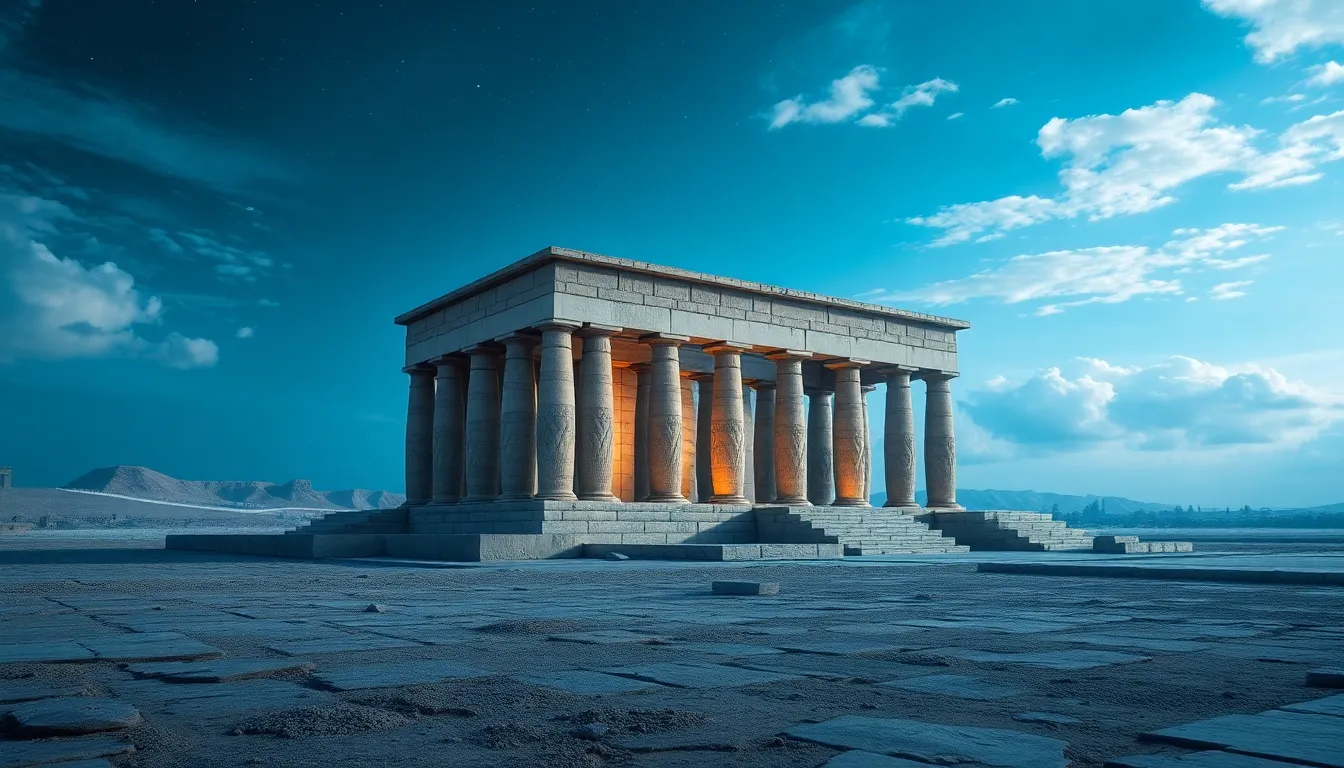The Mystique of the Temple of Isis at Philae
I. Introduction
The Temple of Isis at Philae is one of the most remarkable remnants of ancient Egyptian architecture, standing as a testament to the rich cultural and religious heritage of Egypt. Situated on Philae Island in Lake Nasser, this temple is dedicated to the goddess Isis, one of the most important deities in the Egyptian pantheon. The temple not only serves as a place of worship but also embodies the artistry and architectural prowess of the ancient Egyptians.
In ancient Egyptian culture, the Temple of Isis held immense significance, acting as a center for the worship of the goddess who represented motherhood, fertility, and magic. This article aims to explore the historical background, architectural marvels, religious practices, and cultural significance of the Temple of Isis, as well as its modern-day relevance.
II. Historical Background
The origins of the Temple of Isis can be traced back to the 3rd century BCE, during the reign of the Ptolemaic dynasty. The temple was constructed as part of a broader movement to promote the worship of Isis, reflecting the Hellenistic influence on Egyptian religion and culture.
Key historical events associated with Philae include:
- The establishment of the temple complex under Ptolemy II Philadelphus.
- The expansion and embellishment of the temple during the reigns of subsequent Ptolemaic kings.
- The continued importance of the temple into the Roman period, where it remained a vital religious site.
The influence of the Ptolemaic dynasty is evident in the temple’s architecture, which blends traditional Egyptian styles with Hellenistic elements, showcasing a unique cultural synthesis.
III. Architectural Marvels
The design and layout of the Temple of Isis complex reflect a grand vision, characterized by its axial symmetry and well-defined spaces. The temple is oriented to the north and is approached through a monumental entrance, leading visitors into a series of courtyards and sanctuaries.
Unique features and artistic elements include:
- Intricate reliefs depicting the goddess Isis and scenes from Egyptian mythology.
- The presence of a sacred lake, which played a significant role in ritual practices.
- Columns adorned with floral motifs that symbolize life and rebirth.
Symbolic representations in the architecture are abundant, with many elements designed to invoke the divine presence of Isis and emphasize her qualities as a protector and nurturer.
IV. The Cult of Isis
The goddess Isis holds a special place in Egyptian mythology, often depicted as a woman with a throne-shaped crown and holding an ankh and a sistrum. She was revered as the goddess of motherhood, magic, and fertility, representing the ideal of womanhood and family.
Rituals and worship practices at Philae included:
- Daily offerings and prayers conducted by the temple priests.
- Annual festivals celebrating the myth of Osiris and Isis, which involved processions and reenactments.
- Healing rituals, as the temple was believed to possess sacred powers.
The Temple of Isis played a crucial role in the religious landscape of ancient Egypt, serving as a pilgrimage site for worshippers seeking blessings and healing.
V. Rediscovery and Preservation
The impact of the Nile’s flooding on the Temple of Isis was significant, particularly during the construction of the Aswan High Dam in the 1960s, which threatened to submerge the temple under Lake Nasser. This led to international concern and efforts to preserve the site.
Efforts by UNESCO to preserve the site included:
- The relocation of the temple to higher ground, which involved dismantling and reconstructing the temple stones.
- Ongoing conservation work to protect the site from erosion and environmental damage.
- Research initiatives to understand the temple’s history and significance.
Modern archaeological findings continue to shed light on the temple’s past, contributing to our understanding of ancient Egyptian civilization.
VI. Cultural Significance
The Temple of Isis has influenced various forms of art and literature throughout history. Its imagery and themes have been incorporated into numerous artistic works, reflecting the enduring appeal of the goddess Isis and her mythology.
The legacy of Isis extends into modern spirituality and culture, where she is often invoked in various neo-pagan and esoteric traditions. The temple itself stands as a symbol of ancient Egyptian resilience, showcasing the ability of a culture to endure through time.
VII. Visiting the Temple Today
For those interested in experiencing the Temple of Isis, travel information and accessibility options are readily available. The site can be accessed via boat from Aswan, providing a scenic journey across Lake Nasser.
Visitor experience and highlights include:
- Exploring the beautifully preserved architecture and intricate carvings.
- Attending guided tours that offer insights into the temple’s history and significance.
- Enjoying the serene surroundings and stunning views of the lake and the surrounding landscape.
Educational resources and guided tours are available to enhance the visitor experience, making it a worthwhile destination for history enthusiasts and those interested in ancient cultures.
VIII. Conclusion
The enduring mystique of the Temple of Isis at Philae reflects the profound impact of ancient Egyptian culture on the world. As a site of worship and artistic expression, it represents the spiritual aspirations of a civilization that continues to captivate our imagination.
Preserving cultural heritage is paramount, and the Temple of Isis serves as a reminder of the importance of safeguarding our historical sites for future generations. We invite everyone to appreciate and explore the wonders of ancient civilizations, as they offer invaluable insights into humanity’s shared past.




